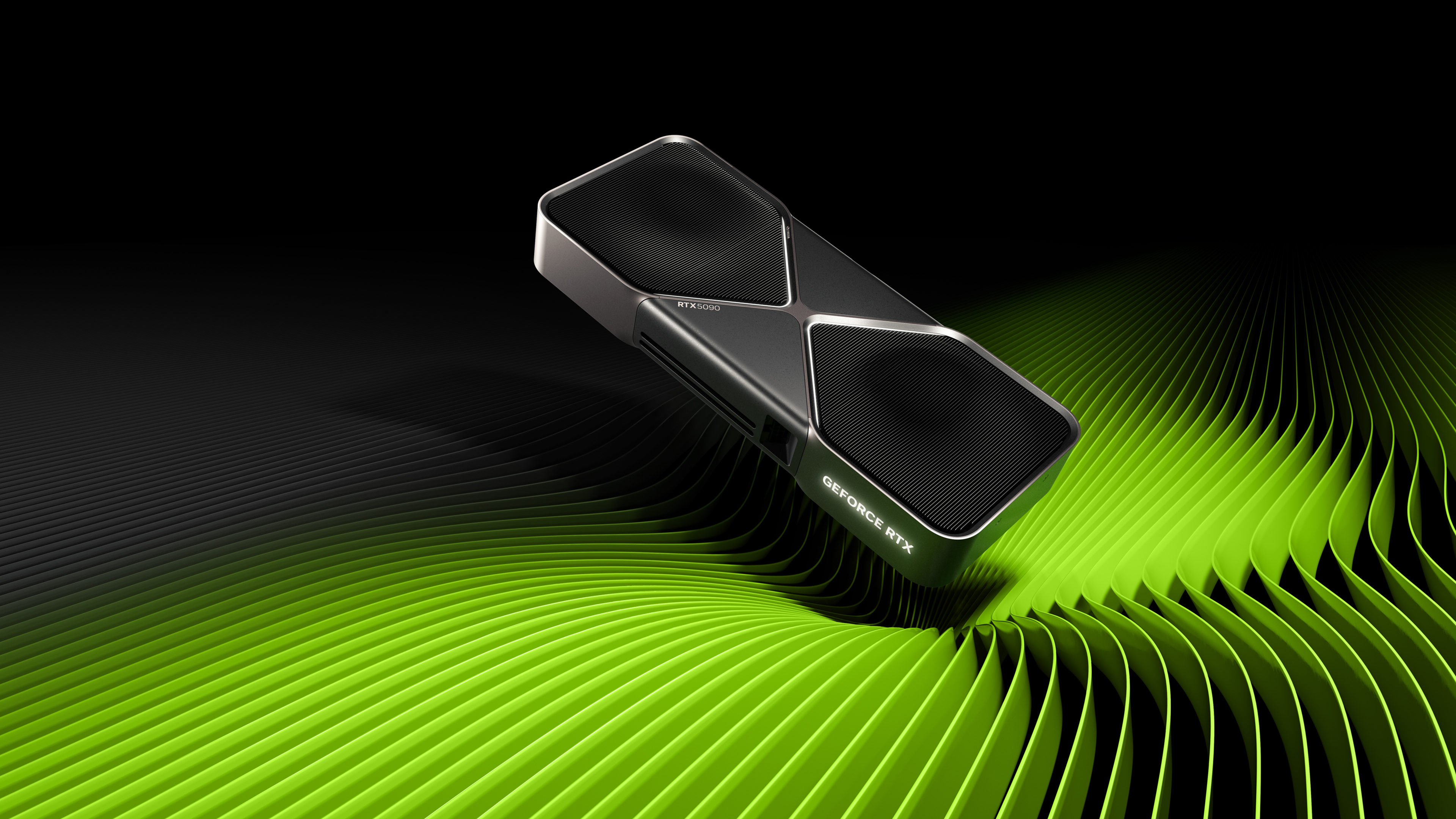
NVIDIA had one of the biggest announcements out of CES 2025, revealing its new 50-series RTX graphics cards. The new GPUs came with some bold claims, including RTX 5070 performance that could match the RTX 4090's power for a fraction of the price.
Of course, those claims were based heavily on boosted AI abilities via DLSS 4, and NVIDIA left us without many concrete performance numbers. That didn't sit well with a lot of PC enthusiasts who are wary about putting such a large emphasis on super-resolution and frame generation. Even I was convinced I'd be upgrading to an RTX 5070 before the CES fallout, but as I wrote in a separate piece about next-gen Radeon cards, AMD might be the way to go for my personal PC.
NVIDIA's Editor's Day at CES has, however, revealed a lot more details regarding native RTX 5000 performance compared to previous cards. Our friends at Tom's Hardware were on the ground to soak up the info, which has given me a better look at what to expect from NVIDIA's RTX 5090, RTX 5080, RTX 5070 Ti, and RTX 5070.
If you are keen on landing a new RTX 5000 GPU on launch day, have a look at my guide on where to buy RTX 5090 and RTX 5080.
NVIDIA shares native RTX 5000 performance comparisons
As everyone suspected, the biggest performance claims made by NVIDIA in its CES 2025 keynote speech rely heavily on DLSS 4's new Multi Frame Generation, which is only available for the new Blackwell cards and their enhanced architecture with improved neural rendering abilities. This left everyone wondering about actual native performance with the cards when DLSS is not enabled.
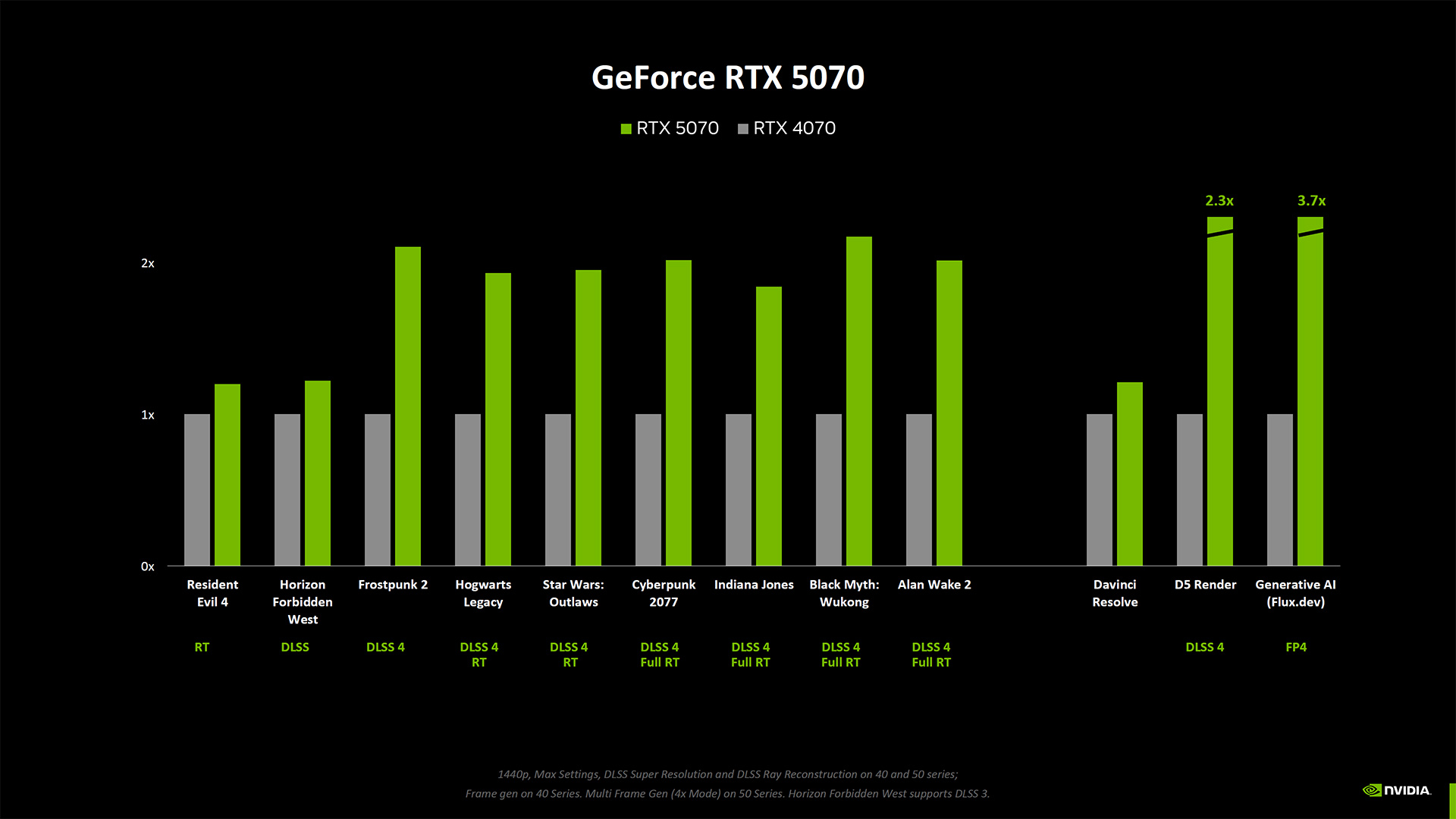
The NVIDIA RTX 5070, which I have my eye on and which will undoubtedly prove very popular with its $549 price, is compared against its RTX 4070 predecessor in the above slide. NVIDIA performed this test with a 1440p resolution and max settings.
Without any DLSS enabled — in other words, the card relies on its natural hardware abilities — the RTX 5070 is pegged at about a 20% improvement compared to the RTX 4070 in games. That number stays flat when you add DLSS 3 without ray tracing. Once DLSS 4 kicks in, we start to see massive improvements to frame rates even with full ray tracing enabled.
Get the Windows Central Newsletter
All the latest news, reviews, and guides for Windows and Xbox diehards.
Considering the RTX 4070 launched with a $599 MSRP, a 20% performance gain with an 8% price drop is all in favor of the RTX 5070.
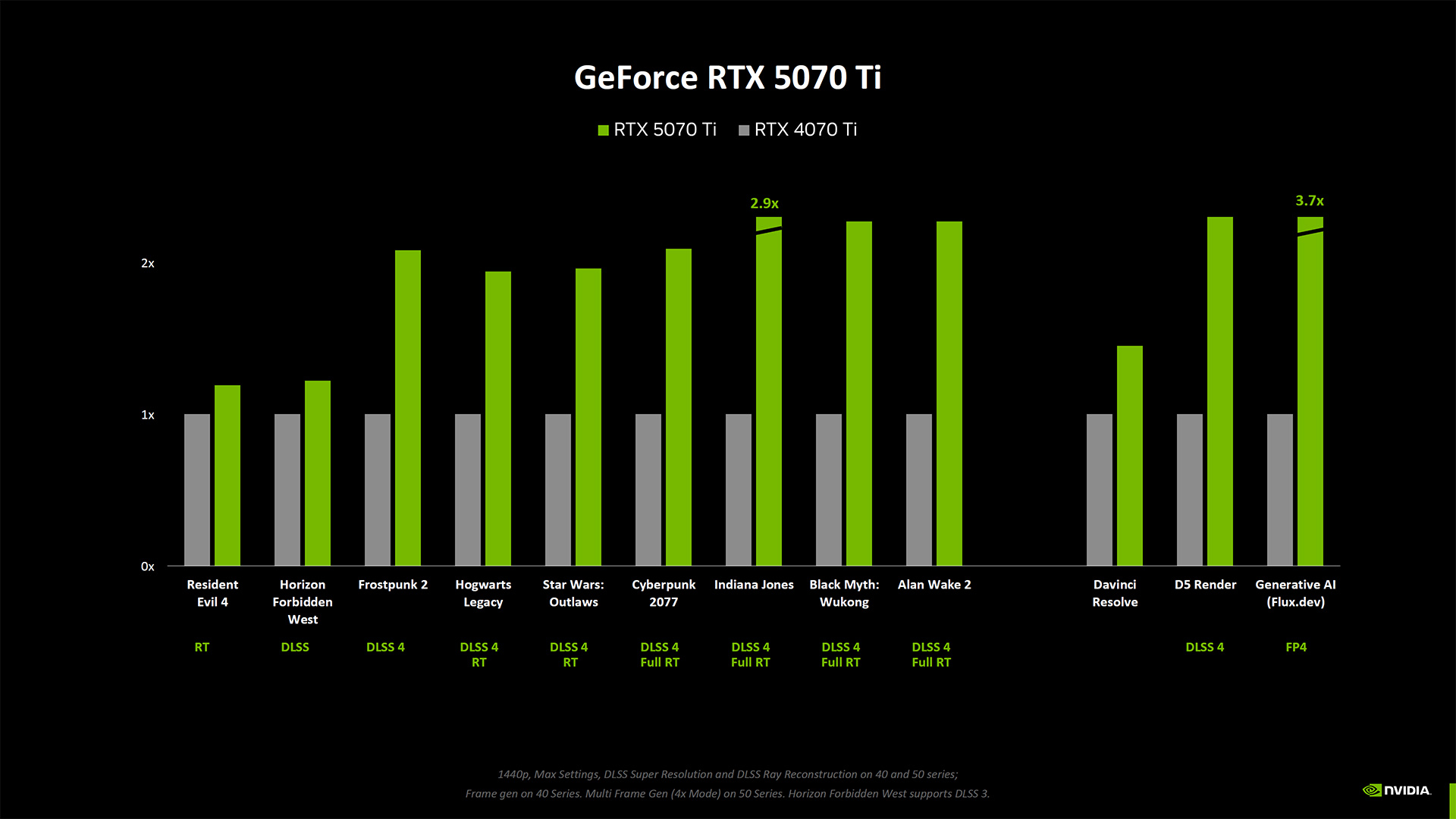
The RTX 5070's Ti sibling represents a similar performance uplift compared to its RTX 4070 Ti predecessor. It's worth pointing out that performance with DLSS 4 enabled climbs higher than the non-Ti version (as expected), peaking at a 2.9x performance increase in Indiana Jones and the Great Circle.
The RTX 4070 Ti launched at a $799 MSRP, and again NVIDIA has lowered the price by $50 for its upcoming RTX 5070 Ti.
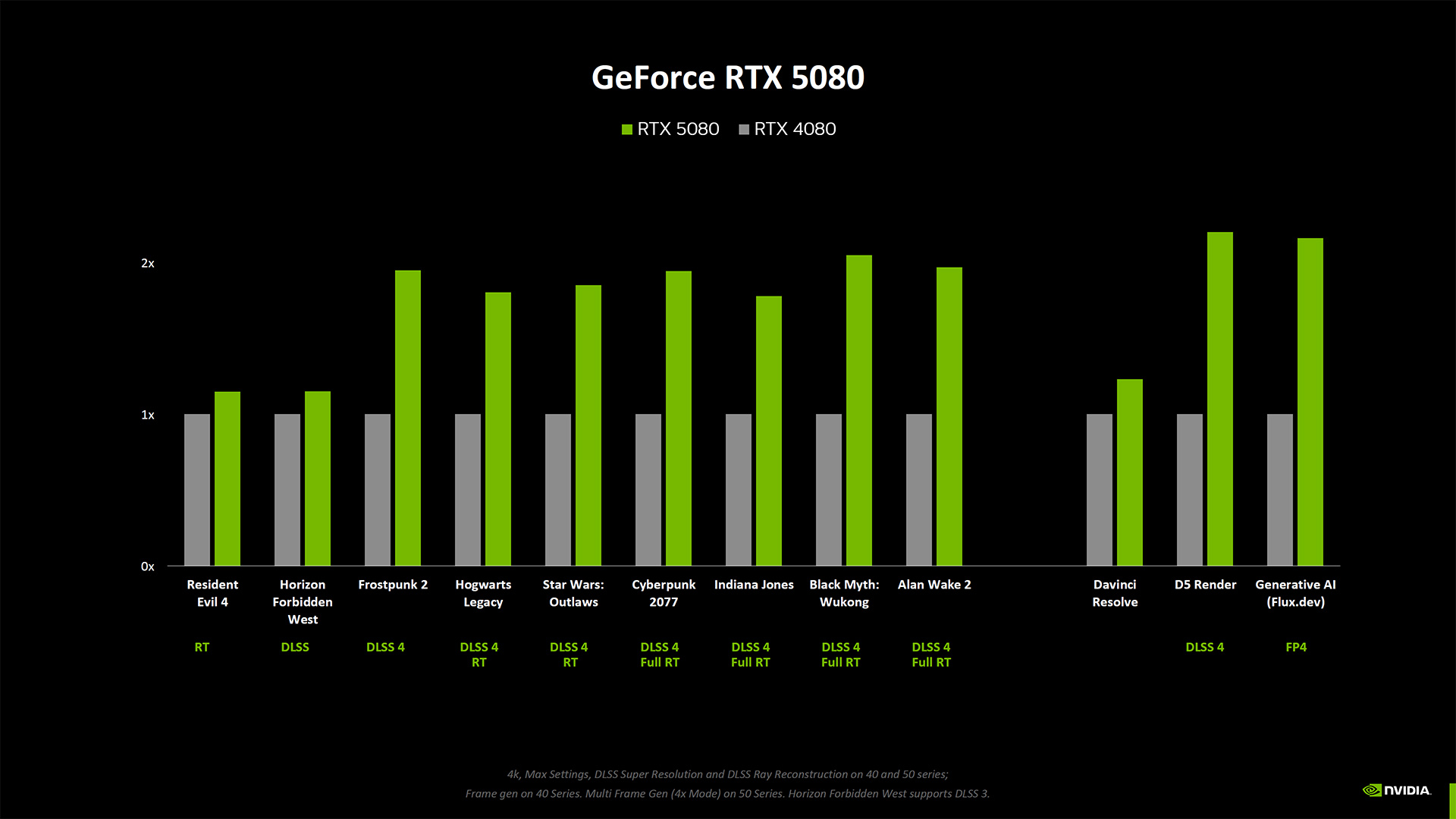
Turning now to the heavy hitters, NVIDIA moved to a 4K resolution for its RTX 5080 and RTX 5090 comparisons.
Looking at the 5080 first, NVIDIA claims about a 15% performance increase compared to the RTX 4080 when DLSS is disabled. The story is the same with DLSS 4 running, with select games tipping the 2x performance comparison. The RTX 5080 is expected to launch at the same $999 MSRP as the RTX 4080, so it's not quite as impressive of a jump as compared to the 5070-class cards.
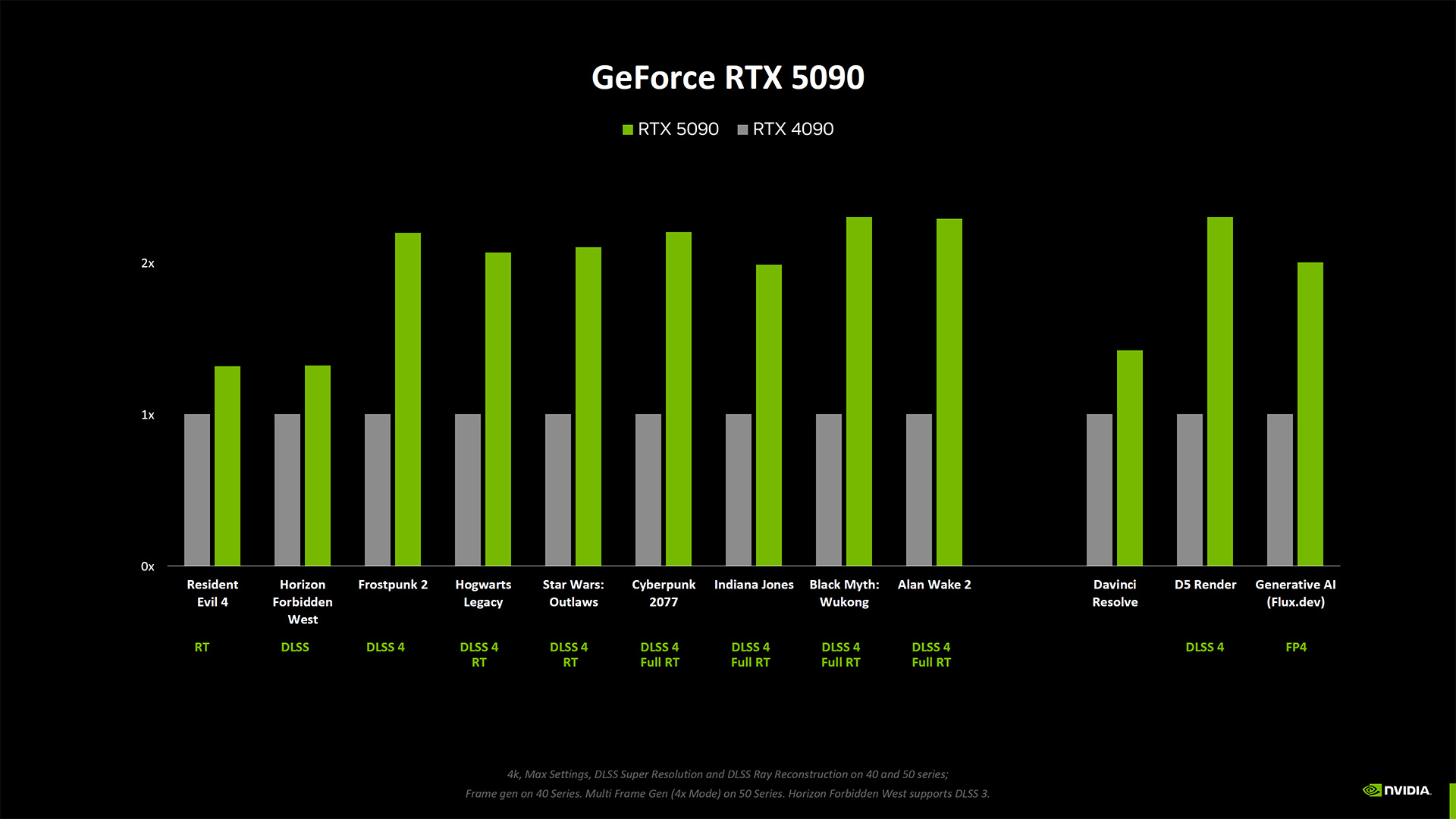
Closing the comparisons is the RTX 5090. NVIDIA is claiming a 30% performance increase compared to the RTX 4090 with DLSS disabled. That's the biggest jump out of all the 50-series GPUs, but it doesn't come cheap.
While the RTX 4090 launched at a $1,599 MSRP, the RTX 5090 will show up on shelves with a $1,999 price tag. That's roughly a 22% price bump compared to its predecessor. Of course, the RTX 5090 comes with some huge improvements, including more (and improved) Tensor Cores, completely new Streaming Processors, and more (and improved) RT Cores. It also boasts 32GB of faster GDDR7 VRAM, up from 24GB of GDDR6 in the RTX 4090.
NVIDIA seems to have latency in check
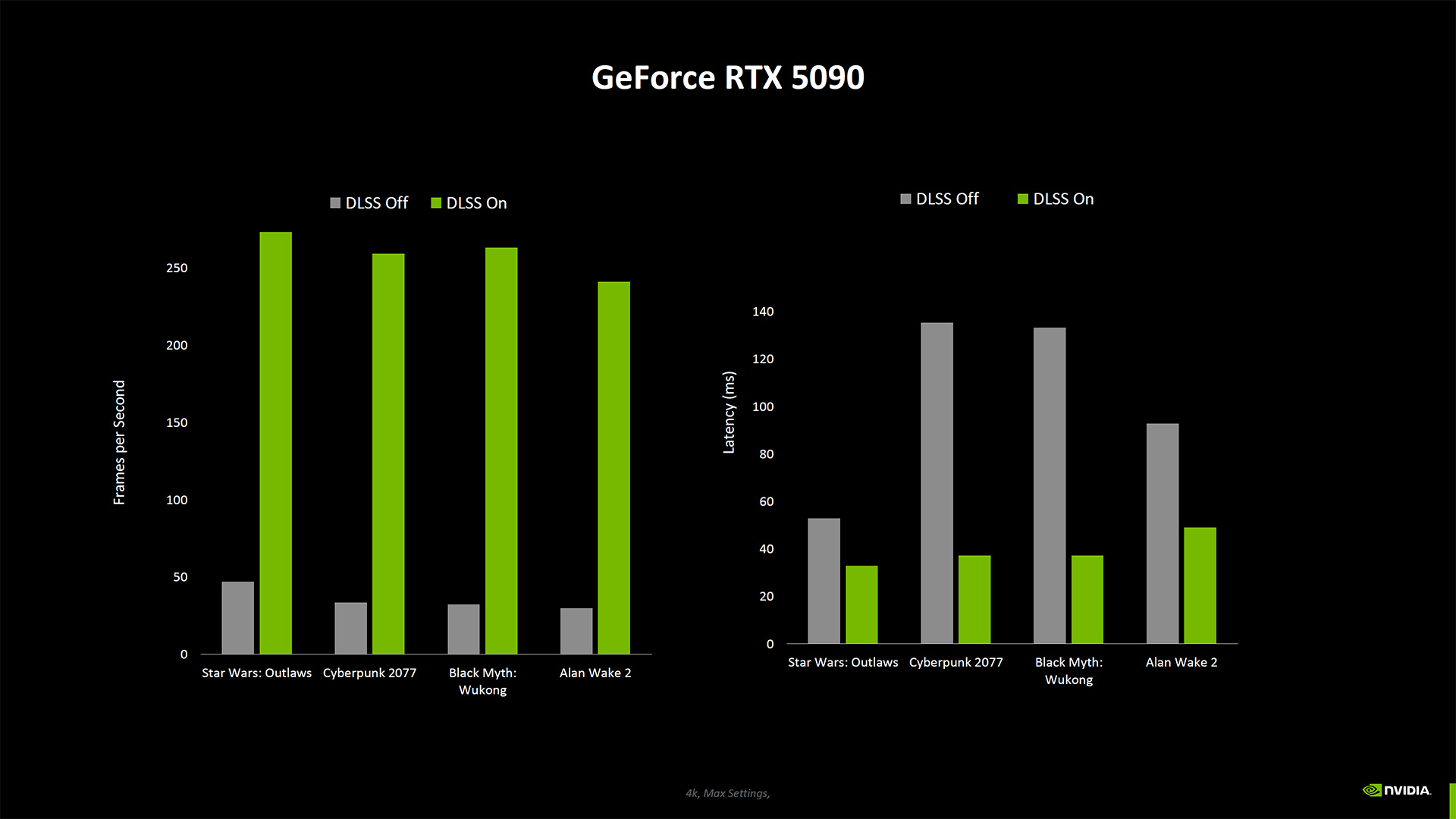
Multi Frame Generation means a lot more frames are being created by AI, and a lot of people are concerned about what that means for latency. It doesn't matter how many frames your GPU creates if it can't deliver them on time.
In a separate slide, NVIDIA quelled some fears on this front. Using the RTX 5090 as an example, the company shows how significantly latency drops when DLSS 4 is running. I'm talking drops from around 135ms to around 30ms in Cyberpunk 2077, with Black Myth: Wukong not far behind.
All of the information NVIDIA shared here is appreciated, and it no doubt puts some fears to rest. However, we'll ultimately have to wait for real reviews to see how the new RTX 5000 cards fare in the wild.

Cale Hunt brings to Windows Central more than eight years of experience writing about laptops, PCs, accessories, games, and beyond. If it runs Windows or in some way complements the hardware, there’s a good chance he knows about it, has written about it, or is already busy testing it.
